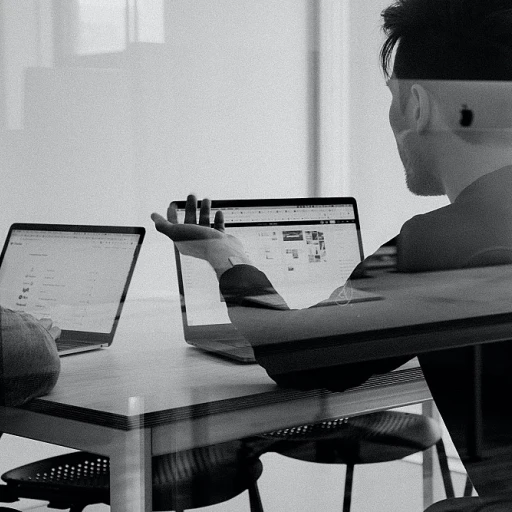
Introduction to Remote Access Codes
The Significance of Remote Access Codes in the Digital Era
Remote access codes have become fundamental components in our increasingly digital workspace. These codes are integral to the flexibility and convenience associated with remote work, serving as key elements that allow employees to connect and interact with various computer systems and networks from virtually anywhere. As the workforce becomes more mobile, understanding the role of remote access codes is essential for navigating modern work environments. Remote access codes function as secure gateways, providing authentication that ensures only authorized users can gain access to sensitive data and systems. This is especially crucial when managing secure remote sessions where sensitive information is exchanged. For remote workers, access codes are often used in conjunction with software solutions that equip them with the tools needed to control remote desktops or connect to a private network. As companies and employees utilize a variety of devices to stay productive, from desktop computers to mobile devices, remote access solutions offer a streamlined and secure method to maintain productivity and ensure the safety of business data. Moreover, integrating best practices such as multi-factor authentication and ensuring users are well-versed with using remote access codes can significantly enhance the security of remote work setups, protecting against potential unauthorized access. For a deeper understanding of how these components fit into a broader framework, check out our guide to remote work solutions which provides valuable insights into managing remote work effectively.How Remote Access Codes Work
Deciphering the Mechanics of Remote Access Codes
Remote access codes play a vital role in the realm of remote work by facilitating connectivity between users and distant computer systems or networks. Essentially, these codes serve as a gateway to access remote environments securely, ensuring that only authorized personnel can establish a connection to the target devices or networks.
When a user wishes to connect to a remote computer, they typically initiate a remote desktop session using specific access software. This software generates a unique remote access code, which acts as a form of authentication. The access code is then verified by the target system, granting the user secure login access to the desktop or network they are aiming to control. It's similar to using a key; without it, entry is impossible.
For an added layer of security, many organizations integrate multi factor authentication into their remote access protocols. This means that beyond the access code, users might need to provide additional verification methods, such as a temporary code sent to their mobile device or email address. This additional verification step significantly reduces the risk of unauthorized access.
It's crucial to ensure that these sessions are not only secure but also user-friendly, minimizing the hurdles for legitimate users while maximizing protection against potential threats. Companies often strive to maintain a delicate balance between ease of access and robust security measures. For those looking to incorporate or upgrade their access solution, understanding these dynamics is key. For a more comprehensive guide on effective remote access policy drafting, you might want to check out our resource on crafting an effective work-from-home policy template.
Security Implications of Remote Access Codes
Exploring the Security Aspects of Remote Access Codes
Remote access codes play an integral role in maintaining the security of remote work infrastructures. They provide a necessary layer of authentication whenever users attempt to access a remote desktop or network. As remote work becomes increasingly prevalent, understanding the security implications of using these codes is crucial.
One of the primary benefits is the ability to securely connect from almost any device, whether a mobile device or a desktop. By using remote access software, users can enter a specific access code to establish a secure remote session. This system minimizes the risk of unauthorized access, ensuring that only target users can gain control over a remote computer.
The implementation of multi factor authentication is often suggested to enhance the security of access codes. By requiring a combination of the access code and additional verification—such as a one-time password sent to an email address—the security of remote work environments is significantly strengthened. Such measures are particularly vital for accessing remote computers over less than a private network.
In conclusion, remote access codes are a fundamental component of a comprehensive access solution in remote work, supporting secure and reliable connections to company resources. Employees and IT administrators should be constantly vigilant in their efforts to bolster authentication protocols to protect sensitive data and prevent breaches.
Benefits of Using Remote Access Codes in Remote Work
Advantages Highlighted by Embracing Remote Access Codes
Remote access codes provide numerous benefits in facilitating remote work environments. These codes effectively serve as a bridge, connecting users to their workspaces from virtually any location on the globe. By allowing employees to access remote computers and networks with secure connections, companies not only enhance productivity but also improve flexibility in their workflow. One major advantage is the increased accessibility. Users can connect to their desktop or work devices using an access code, ensuring they retain control over their tasks while away from the office. This transitions smoothly, whether a user is using a mobile device or a traditional computer. Moreover, as this access technology often requires multi-factor authentication, it adds an essential layer of security, significantly reducing the risk of unauthorized access. In addition to security enhancements, remote access solutions enhance collaboration. Team members can jointly work on projects in real-time without geographic limitations. This access ensures that resources and information remain at users' fingertips, fostering prompt decision-making and efficient task management. Furthermore, remote access software supports continuous remote support services, facilitating IT teams to swiftly address technical issues and reduce downtime. Companies benefit from reduced operational costs, too. By promoting remote work via secured access codes, businesses can limit overhead expenses associated with office space and infrastructure. Employees also save time otherwise spent commuting, leading to higher job satisfaction, which correlates with increased productivity. The adoption of access codes in remote work can transform the landscape by balancing security with accessibility, ushering in a new era of work flexibility and efficiency.Challenges and Solutions in Managing Remote Access Codes
Overcoming Hurdles with Remote Access Codes
Managing remote access codes for accessing computers and devices in a remote work environment can present several challenges. One of the primary hurdles is ensuring secure management of these codes to prevent unauthorized access and potential breaches.
Another significant challenge is the complexity of multi-factor authentication (MFA). While MFA adds an essential layer of security, it can sometimes complicate the user experience. Users frequently face issues when trying to remember multiple passwords and codes, especially when accessing from mobile devices or dealing with frequent code changes.
Additionally, there's the issue of maintaining network security. As remote desktop connections increase, so does the need to safeguard against potential intrusions on the network. This includes ensuring that all access sessions are monitored and controlled effectively.
To tackle these challenges, companies can implement robust access solutions that streamline authentication processes. This includes integrating secure access software that supports a user-friendly multi-factor authentication system, providing better remote support during setup, and offering regular training on what remote desktops entail for secure access. Ensuring that users establish secure email addresses linked to these systems can also help mitigate risks.
Moreover, adopting policies that enforce the use of secure networks, like private virtual networks (VPNs), ensures that remote workers connect through trusted environments. This not only aids in protecting devices but also enhances the secure transmission of data.
Future Trends in Remote Access Technology
Looking Ahead: Innovations in Remote Access Technology
The landscape of remote access technology is continually evolving, driven by the increasing need for secure and efficient ways to connect users to their work environments. As companies strive to enhance their remote work capabilities, several developing trends highlight the future of remote access codes and related technologies.- Enhanced Security Measures: Security remains a pressing concern in remote work settings. The rise of multi-factor authentication (MFA) is a testament to the push towards more secure remote access solutions. These involve something users know (like a password) and something they possess (such as a mobile device). Future innovations might incorporate biometric authentication, further bolstering security against unauthorized access.
- Seamless Integration Across Devices: As more users leverage various devices—from traditional desktops to mobile devices—for remote work, there is a growing demand to ensure seamless access across these platforms. Access software is evolving to provide a consistent user experience, regardless of the device or network.
- AI and Machine Learning Integration: Emerging technologies like AI and machine learning could play a pivotal role in enhancing remote access. They have the potential to recognize patterns and predict potential security threats, thereby providing a more proactive approach to cybersecurity.
- Cloud-Based Solutions: The shift towards cloud computing offers a nimble and scalable approach to remote desktop access. Cloud-based solutions provide users with the flexibility to access their work environments from virtually anywhere at any time without the need for complex on-premises infrastructure.
- Zero Trust Network Access (ZTNA): As organizations focus on securing their networks, the concept of Zero Trust Network Access is gaining traction. It operates on the principle of verifying every request as though it originates from an open network, emphasizing strict identity verification for a secure session.












